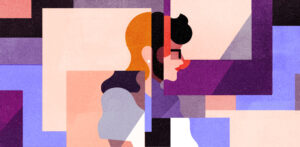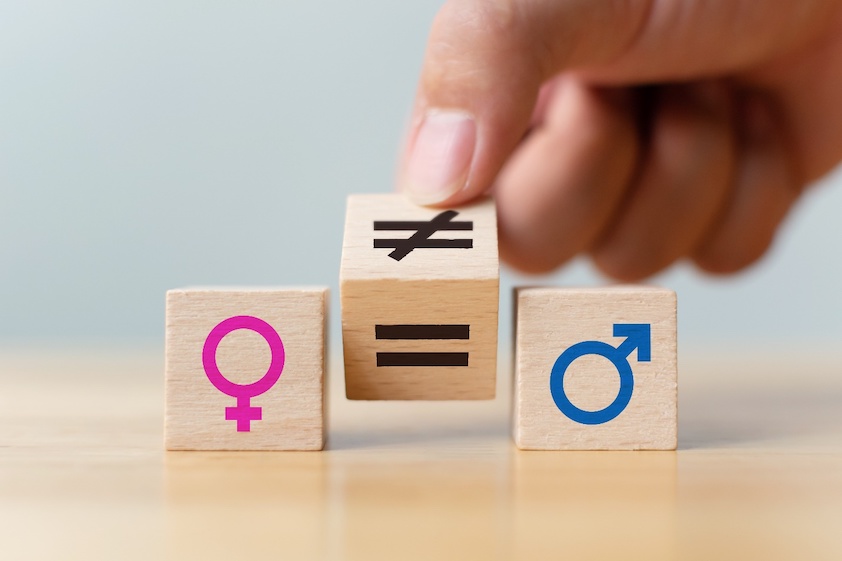Autism and bisexuality are both complex aspects of human identity, each influencing an individual’s experiences, relationships, and sense of self in unique ways. Autism Spectrum Disorder (ASD) is a neurodevelopmental condition characterized by challenges in communication, social interaction, and repetitive behaviors. On the other hand, bisexuality refers to sexual orientation, where individuals are emotionally and sexually attracted to both genders. In this blog, we will explore the relationship between autism and bisexuality, debunk common misconceptions, and shed light on the experiences of individuals navigating these two aspects of their lives.
Contents
Understanding Autism and Bisexuality

Autism, often known as Autism Spectrum Disorder (ASD), is characterized by difficulties in social interaction, communication challenges, and restricted and repetitive behaviors. It is essential to recognize that autism is a spectrum, meaning individuals can experience a wide range of symptoms and strengths.
Similarly, bisexuality refers to a sexual orientation where individuals are attracted to both men and women. Understanding and supporting individuals who identify as both autistic and bisexual is necessary to create inclusive environments that embrace diversity.
Understanding Autism
Autism manifests in various ways, with each individual having unique strengths and challenges. People with autism often experience difficulties in social interaction, such as understanding social cues, maintaining eye contact, and engaging in reciprocal conversation. Additionally, they may have intense interests in specific topics and exhibit repetitive behaviors or routines.
Unfortunately, there are many misconceptions surrounding autism, which can lead to stigmatization and exclusion. Contrary to popular belief, autism is not a disease or something that needs to be “cured.” It is a neurological difference that contributes to individuals’ diverse perspectives and abilities.
Understanding Bisexuality
Bisexuality is a sexual orientation that encompasses attraction to both genders. Individuals who identify as bisexual may have romantic, emotional, and sexual feelings towards people of their gender and other genders. It is crucial to acknowledge that bisexuality is a valid and legitimate sexual orientation, often misunderstood due to various stereotypes and misconceptions.
Bisexual individuals face unique challenges in society. They may experience erasure, where their bisexuality is invalidated or dismissed. Biphobia, prejudice, and discrimination against bisexual individuals, further compound these challenges. It is essential to provide safe spaces and support systems for bisexual individuals to feel affirmed and accepted.
The Intersection of Autism and Bisexuality

The intersection of autism and bisexuality is an important and complex topic that involves understanding both the experiences of individuals who identify as autistic and bisexual and how these identities can interact and influence each other.
- Identity Development: For individuals who identify as both autistic and bisexual, the process of understanding and embracing these identities can be complex. Social challenges that may be associated with autism can influence how individuals explore and express their sexual orientation. Some autistic individuals may experience difficulty in recognizing and articulating their feelings of attraction, making the process of understanding their bisexuality more challenging.
- Social Interactions and Relationships: Autistic individuals may experience difficulties in forming and maintaining relationships due to challenges in social communication and understanding social cues. These challenges can affect their ability to navigate romantic and sexual relationships, including those with individuals of different genders. Additionally, societal stigmas and misconceptions about both autism and bisexuality can compound the difficulties faced in forming meaningful connections.
- Sensory Sensitivities: Many autistic individuals have sensory sensitivities, which can affect their experiences with physical intimacy. Overwhelming or discomfort due to sensory stimuli can influence their approach to romantic or sexual relationships.
- Stereotypes and Misunderstandings: Both autism and bisexuality have faced stereotypes and misunderstandings. Autistic individuals may be inaccurately perceived as lacking empathy or emotional depth, which can affect how their bisexuality is understood and accepted by others.
- Support and Acceptance: Like anyone, individuals who are both autistic and bisexual benefit from understanding, supportive environments where their identities are acknowledged and accepted. Creating inclusive spaces that embrace diversity in sexual orientation and neurodiversity is crucial for the well-being and mental health of such individuals.
It’s important to remember that everyone’s experience is unique, and not all autistic individuals will identify as bisexual, nor will all bisexual individuals be autistic. Additionally, the intersection of these identities can differ significantly from person to person. To gain a deeper understanding, it’s essential to listen to and learn from the diverse stories and experiences of individuals who identify with both autism and bisexuality.
Mental Health and Well-being
Support and resources are essential for individuals seeking help, information, and guidance on various issues they may face. Here are some key support and resource avenues that individuals can access:
Mental Health Support
- Mental Health Helplines: Many countries have helplines that offer support and assistance for individuals experiencing mental health challenges. These helplines are often available 24/7 and are staffed by trained professionals.
- Therapists and Counselors: Seeking support from mental health professionals, such as therapists, counselors, or psychologists, can provide individuals with personalized guidance and coping strategies.
Support Groups
- Online and Offline Support Groups: Many organizations and communities host support groups for individuals facing specific challenges or identities. These groups offer a safe space to share experiences, seek advice, and provide mutual support.
Disability Services
- Disability Rights Organizations: These organizations work to protect and advocate for the rights of people with disabilities. They can provide information about disability-related services and resources.
- Rehabilitation Services: Various rehabilitation services are available to assist individuals with disabilities in accessing resources, vocational training, and support.
Support and Resources
Promoting acceptance and inclusion is crucial for building a compassionate and harmonious society where individuals from diverse backgrounds, identities, and abilities feel valued, respected, and supported. Here are some ways to promote acceptance and inclusion:
- Education and Awareness: Raise awareness about different cultures, identities, and disabilities through educational initiatives. This includes incorporating diverse perspectives and histories in school curricula, organizing workshops, and hosting awareness events to dispel myths and stereotypes.
- Foster Empathy: Encourage empathy by promoting understanding and open dialogue. This can be achieved through storytelling, personal testimonies, and engaging with diverse communities. Empathy helps individuals relate to others’ experiences and challenges, fostering a sense of connection.
- Create Inclusive Spaces: Establish environments that are welcoming and accessible to everyone. This includes physical spaces (e.g., public buildings, workplaces) and online platforms. Ensure that facilities and resources cater to the needs of individuals with disabilities.
- Champion Diversity in Media: Support and encourage diverse representation in media and entertainment. This can help challenge stereotypes and promote positive narratives about various identities and communities.
- Address Unconscious Bias: Engage in self-reflection to identify and address unconscious biases that may influence attitudes and behaviors towards others. Unconscious biases can perpetuate discrimination and hinder inclusion.
Promoting Acceptance and Inclusion

Promoting acceptance and inclusion is crucial for building a compassionate and harmonious society where individuals from diverse backgrounds, identities, and abilities feel valued, respected, and supported. Here are some ways to promote acceptance and inclusion:
- Education and Awareness: Raise awareness about different cultures, identities, and disabilities through educational initiatives. This includes incorporating diverse perspectives and histories in school curricula, organizing workshops, and hosting awareness events to dispel myths and stereotypes.
- Foster Empathy: Encourage empathy by promoting understanding and open dialogue. This can be achieved through storytelling, personal testimonies, and engaging with diverse communities. Empathy helps individuals relate to others’ experiences and challenges, fostering a sense of connection.
- Create Inclusive Spaces: Establish environments that are welcoming and accessible to everyone. This includes physical spaces (e.g., public buildings, workplaces) and online platforms. Ensure that facilities and resources cater to the needs of individuals with disabilities.
- Champion Diversity in Media: Support and encourage diverse representation in media and entertainment. This can help challenge stereotypes and promote positive narratives about various identities and communities.
- Address Unconscious Bias: Engage in self-reflection to identify and address unconscious biases that may influence attitudes and behaviors towards others. Unconscious biases can perpetuate discrimination and hinder inclusion.
- Promote Inclusive Language: Use language that respects and includes everyone. Be mindful of the words and phrases you use, avoiding derogatory language or slurs.
- Support Anti-Discrimination Policies: Advocate for and support policies that protect the rights of marginalized communities. This includes legislation against discrimination based on race, gender, sexual orientation, disability, etc.
Conclusion
Understanding the intersection between autism and bisexuality is essential for creating inclusive communities that celebrate diversity. By recognizing the unique challenges faced by autistic bisexual individuals, we can provide appropriate support and resources to foster their well-being. It is crucial to promote acceptance, challenge stereotypes, and advocate for equal rights and opportunities. Let us embrace neurodiversity and celebrate the rich tapestry of human experiences.
Life may sometimes be challenging for bisexuals, but Online Bisexual Counseling can help. Get experienced LGBTQ therapists at PrideMantra: Book a trial LGBTQ therapy session.


